- Updated: December 16, 2022
Blades vs. Cavity Back Irons
Blade irons are generally reserved for lower handicap golfers and professional golfers. They are less forgiving but offer more control than cavity back irons.
Cavity back irons have a larger “sweet spot” improving consistency on off center strikes. They feature a drilled out “cavity” behind the club face, allowing engineers to increase perimeter weighting.
Cavity back irons feature a more oversized sole and top line to inspire confidence in higher handicap players, average golfers, or the aspiring beginner golfer.
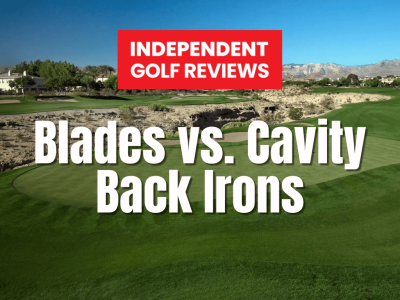
What Are Blades / Who Should Play Them?
Blade irons are forged from a singular piece of metal, have a smaller, more “traditional looking” classic blade head shape, a thinner sole and top line, are less forgiving to poor strikes than cavity back irons, and derive their name from their “knife blade” like appearance.
A blade iron will almost always have less bounce than a cavity back iron due to their smaller sole design, meaning they aren’t as easy to launch unless your ball striking ability is high level.
You’ll often hear blades referred to as a “player’s iron,” referencing the fact that the golfer using them has developed the ability to consistently strike their blade irons well enough that they don’t need the forgiveness game improvement irons can provide most golfers.
A bladed golf club essentially trades forgiveness for more shot shaping ability to work the golf ball, controlled/reliable carry distances from center strikes, and a more aesthetic appearance.
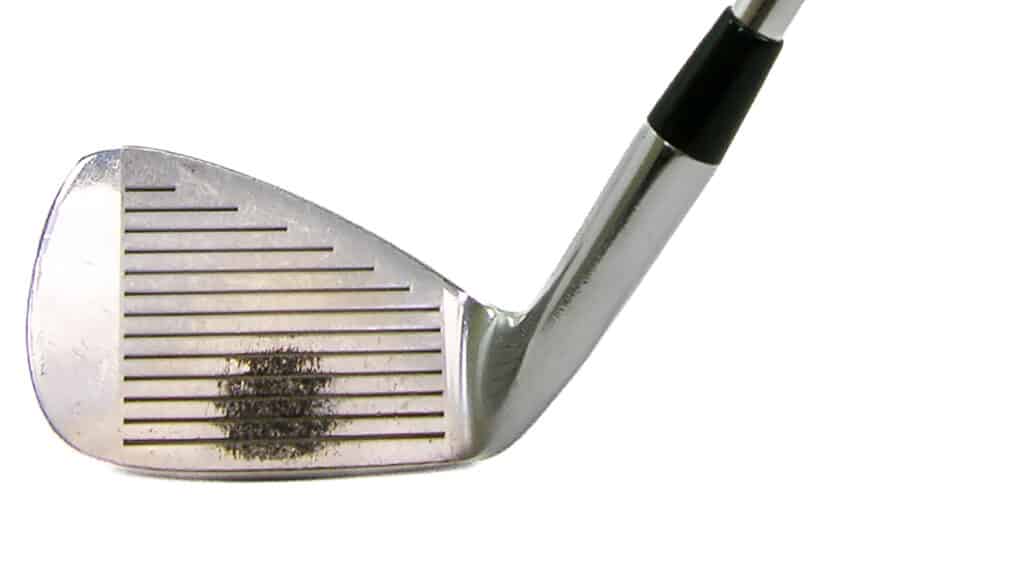
In addition to blades having less forgiveness than their cavity back iron counterparts, blades will often have less loft than cavity back irons resulting in slightly less distance naturally.
PGA Tour players will opt for having as much control as they want from forged blades rather than the increased forgiveness game improvement clubs provide. You’d be hard pressed to find elite golfers who haven’t toyed with the idea of playing blades during their playing career.
Above is an image of Tiger Woods 8 iron from his set of blades that he used to complete what I believe is the greatest achievement in golf. Tiger used the clubs for the four consecutive major victories that make up the “Tiger Slam” – the 2000 US Open, Open Championship, PGA Championship, and 2001 Masters.
As you can obviously see from his wear pattern, Tiger doesn’t miss the center of the face often. Ultimately, you need to consistently strike the center of the club face to enjoy playing a FULL set of bladed irons (from wedge to longer irons).
As we’ll touch on later, thanks to modern golf equipment technology, golfers have more options to use both bladed irons and cavity back irons in a single bag setup!
Who Should Play Cavity Back Irons?
The average player’s ability to hit the ball squarely is less repeatable than a tour pro’s ability. Cavity back irons have more mass in general than any blade you’ll find, inspiring confidence in the average player and creating easier launch conditions for the average golfer.
To combat this unfortunate fact of the average golfer, golf club manufacturers have engineered “cavity backs” into irons that allow more game improvement technology to be packed into their design.
As you can see from the photo to the right of a Callaway Rogue ST Max iron, cavity back irons have a much thicker sole and overall profile and appearance than blade irons.
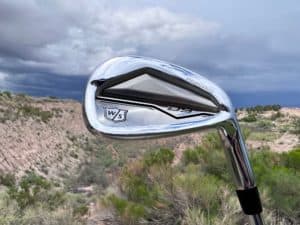
In addition to the thicker sole that allows for inconsistent low point control (a problem of most amateurs) to be more playable for golfers, cavity backs also have thicker edges with more perimeter weighting providing increased forgiveness and boosting the overall MOI of the club heads.
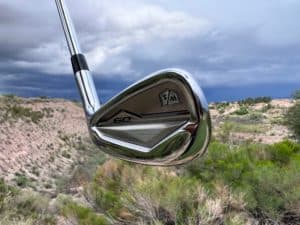
The lower center of gravity design in a cavity back irons club head naturally allows players to hit the ball higher, resulting in many cavity back irons having lower loft than their same iron but blade design counterparts.
As cavity backs have technologically advanced through the years, engineers have started adding high-density metals to crucial areas of the club head (Tungsten in the Callaway’s above) to provide even more forgiveness on off center hits, help players achieve a higher ball flight and give the players more distance.
Cavity backs essentially trade more control and shot shaping ability for a more prominent sweet spot, maximum distance, and the ability to hit the ball higher and straighter, easier.
Above is a photo of a Miura CB-301, a cavity back iron that breaks the majority of standard rules for cavity backs.
Cavity backs are only sometimes forged and usually aren’t as visually appealing as a set of blade irons, but golf club manufacturers like Miura make incredibly high quality and beautiful clubs in both the blade and cavity back shaping (if you can afford them.)
If you’re worried about bag appeal with your golf clubs but still need some forgiveness, we’ll have some key suggestions for you later on in the article when we discuss muscle back irons and “split sets.”
What About "Muscle Back" Irons?
Muscle back irons have the sleek and aesthetically appealing design of a blade iron. Still, their mass is centrally located lower in the club head to provide some of the forgiveness a cavity back iron has.
Muscle backs are essentially the halfway point between a traditional blade iron and “super game improvement irons.”
Players can improve their overall bag appeal and their own confidence by looking at a more intimidating club profile, yet knowing in the back of their minds they have some game improvement technology usually reserved for cavity backs built into their muscle back irons’ sleek appearance.
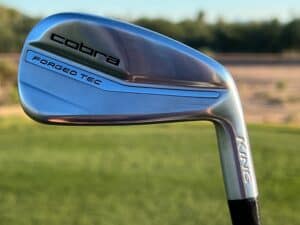
What is a "Split Set"?
Golfers confident in their ability to hit their “scoring clubs” (wedges, 9-8-7 irons) but enjoy having more forgiveness in their longer irons are starting to take advantage of what is now called a split set.
Let’s say you’re the type of golfer who feels confident in their striking enough to play blades in their short irons but struggles with their long irons.
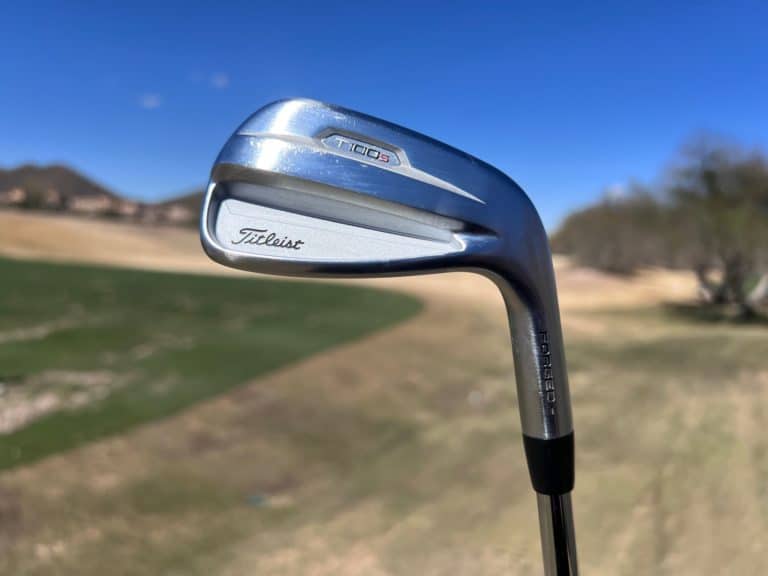
Instead of being limited to choosing a set of cavity back irons that allow them to hit their long irons like golfers of previous generations, you can “split” the golf clubs set makeup into half blades or muscle backs and half a more forgiving cavity back design.
By implementing a split set approach to your bag, players can retain the ability to shape shots where it really matters (attacking flags with scoring clubs to lead to more birdie opportunities) and improve their distance and launch with off center strikes on the more challenging to hit longer irons.
As you can see from the photo above, golf club manufacturers like Titleist and others have had this idea for a while. They have even built “complementary” looking sets of clubs with a blade, muscle back, and cavity back shaping to make a transition in a split set more seamless for players!
Do Pro Golfers Ever Use Cavity Back Irons?
With trends in golf club equipment making the rounds on the PGA Tour, we’re noticing more and more professional golfers opting for a cavity back design in one or more of their longer irons. Quite a few pros are enjoying the forgiveness cavity backs can bring to a difficult to hit 2 or 3 iron.
Rory McIlroy, the new and current World Number 1 ranked professional golfer, currently implements the use of a split set design and has a more forgiving TaylorMade P770 muscle back as his 3 iron.
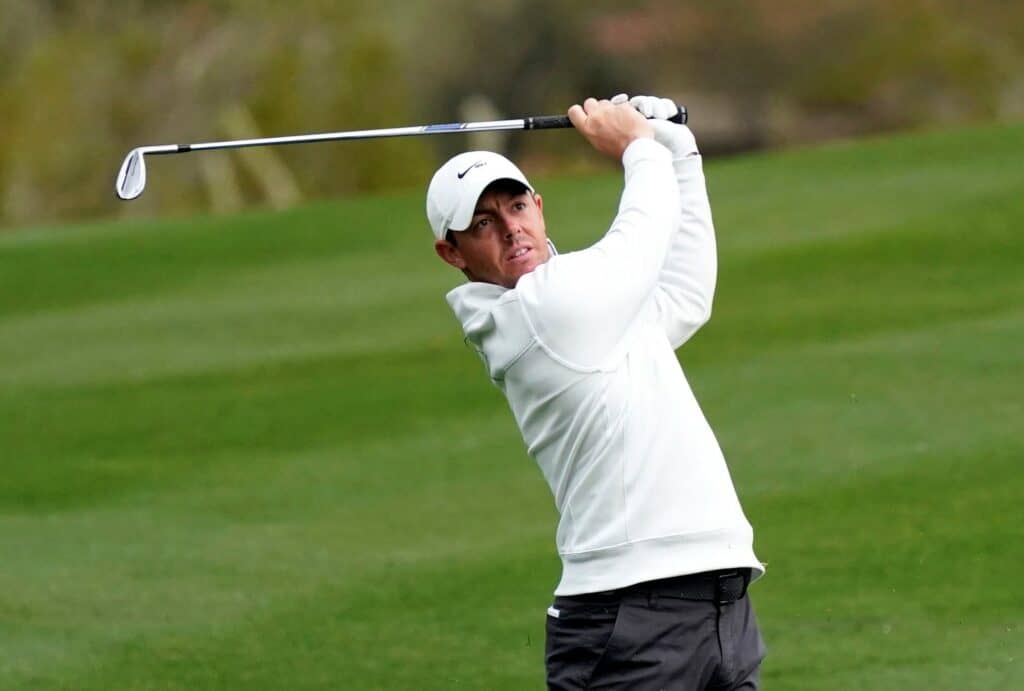
With Rory’s distance, ability to shape shots, and clearly World Number 1 caliber low point control, most golfers would imagine he could play a bladed one iron and still play great.
While Rory is still playing his own TaylorMade P730 “Rors Proto” bladed irons in the 4 iron-PW, even a player of his talent and skill enjoys more bounce and the forgiveness a muscle back iron like the P770 can provide him in his 3 iron.
About The Author
Writers of Independent Golf Reviews
Independent Golf Reviews has tested and reviewed 1000+ golf products over the past 10 years. We use our experience and expertise to give golfers an unbiased insight on the market.
Read more…
Share
Receive the best golf discounts available exclusively for our subscribers and be auto entered into our monthly golf giveaways!
Success!⛳️
You are now an official member of IGR. Keep an eye out for the perks.
No spam, ever. 🔒

